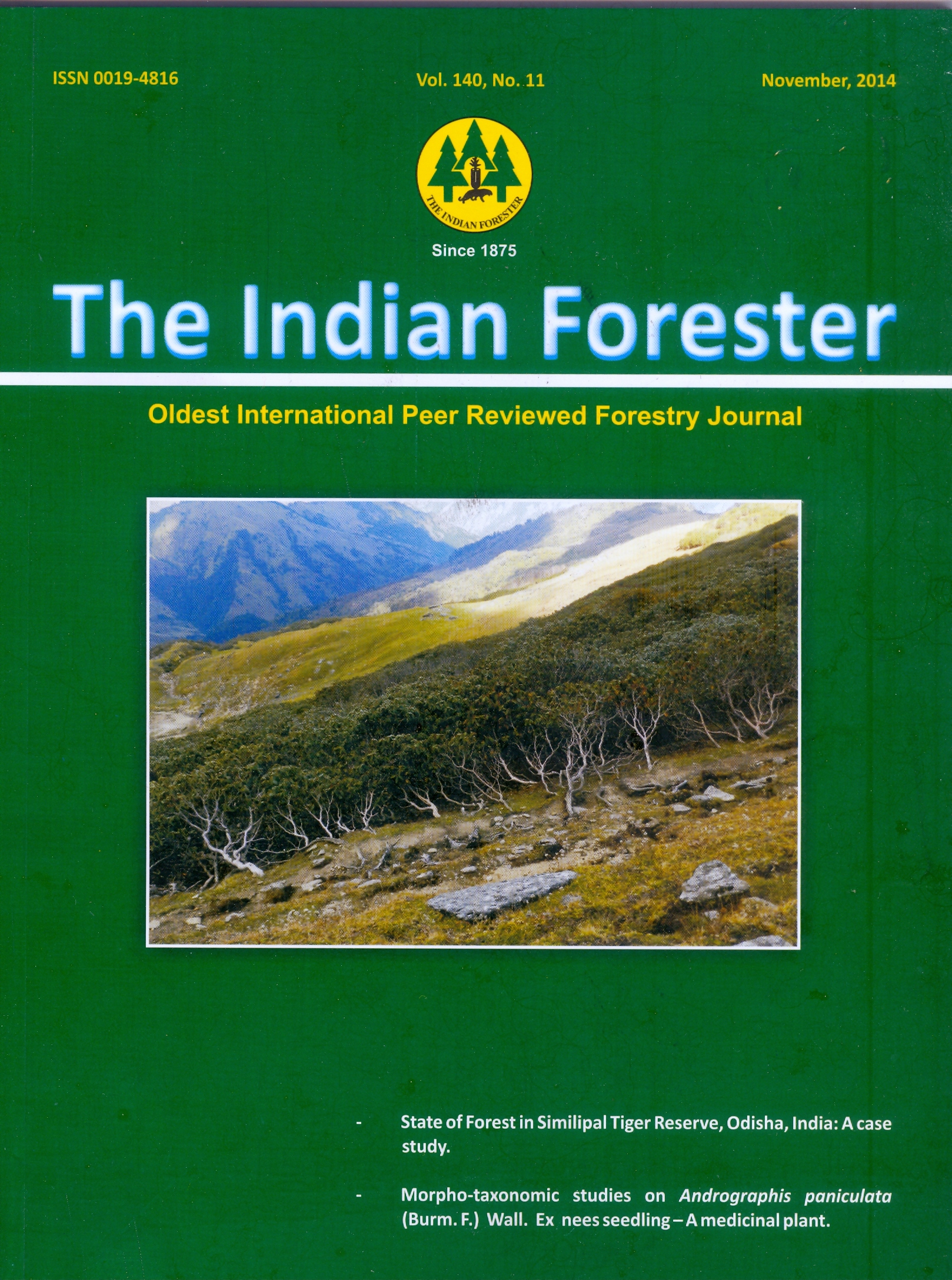Phenological Studies of Trees of Tadoba National Park, Chandrapur, Maharashtra, India
DOI:
https://doi.org/10.36808/if/2014/v140i11/54442Keywords:
Chandrapur, Flowering, Fruiting, Leaf Flushing, Leaf Shedding, Phenograms, Phenology, Phenophases, Tadoba National Park.Abstract
Phenology of trees was studied in a dry deciduous forest (Tadoba National Park) in Chandrapur, Maharashtra state during 1996 to 1998. Out of four species Syzygium cumini (L) Skeels, Mangifera indica L.; Glochidion zeylanicum (Gaertn.) Juss. and Bauhinia malabarica Roxb. were evergreen. Leaf shedding was highest (91.67%) from February to April in 48 tree species. Flowering was from March to May and maximum in April. Possible reasons for leaf fall and flowering in tropical plants during hot season, include day length, abrupt drop in temperature, moisture stress or decreased water availability and change in incident radiation. Leaf fall during the dry season would offer good conditions for seed dispersal. Two fruiting peaks were in February and July. Fruiting periodicity has strong correlation with seed/ fruit dispersal mechanism and viability. Leaf flushing was maximum during the period from April to June. Leaf emergence is not correlated with the onset of rainy season but rather precedes its onset, often coinciding with flowering.Downloads
Download data is not yet available.
Downloads
Published
2014-11-01
How to Cite
Kunhikannan, C., & Rao, N. R. (2014). Phenological Studies of Trees of Tadoba National Park, Chandrapur, Maharashtra, India. Indian Forester, 140(11), 1074–1080. https://doi.org/10.36808/if/2014/v140i11/54442
Issue
Section
Articles
License
Unless otherwise stated, copyright or similar rights in all materials presented on the site, including graphical images, are owned by Indian Forester.





